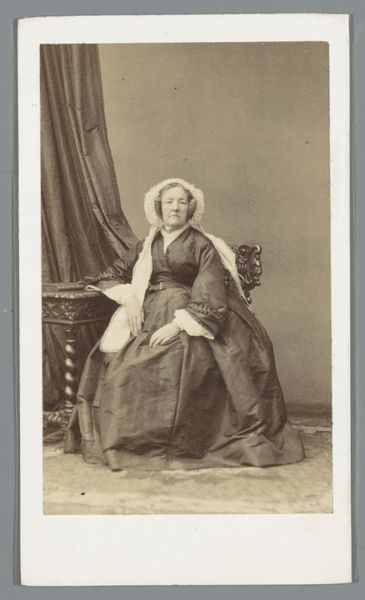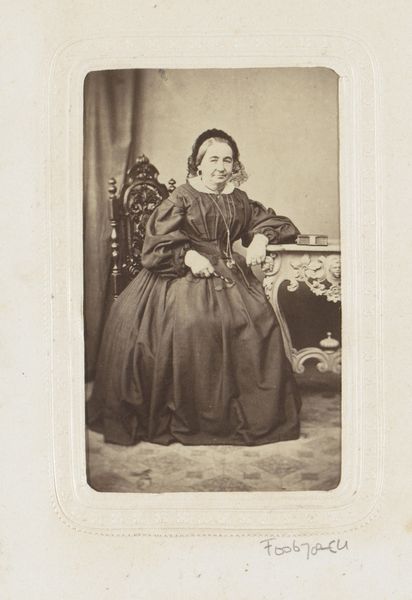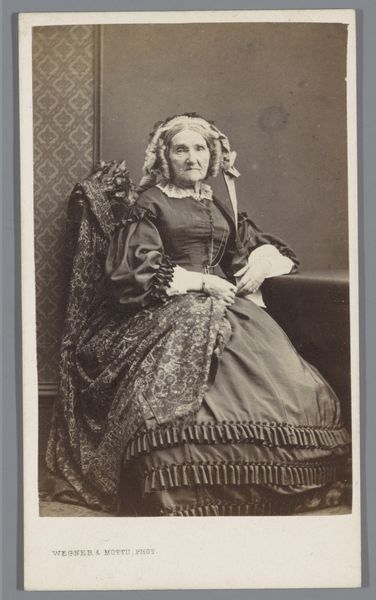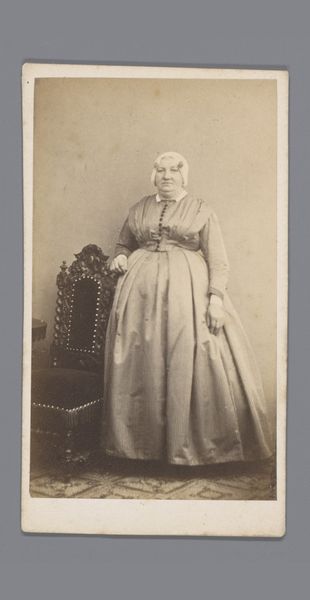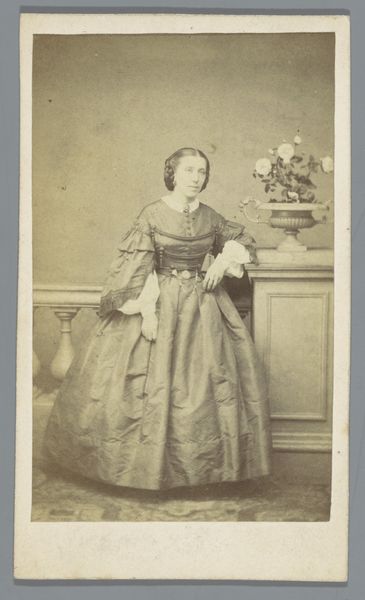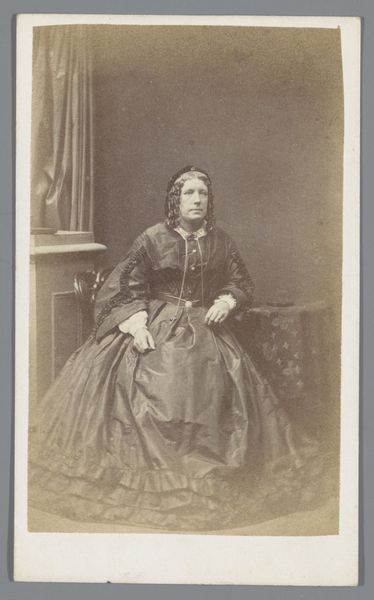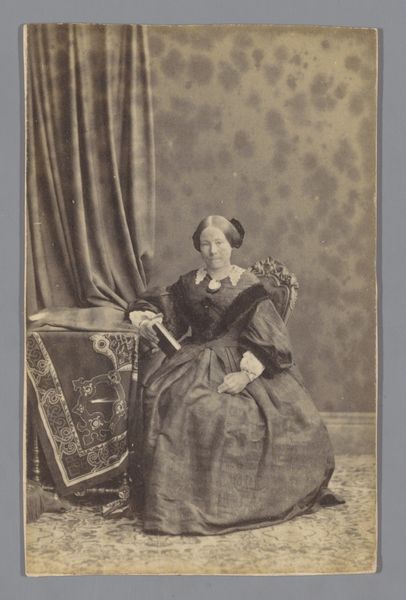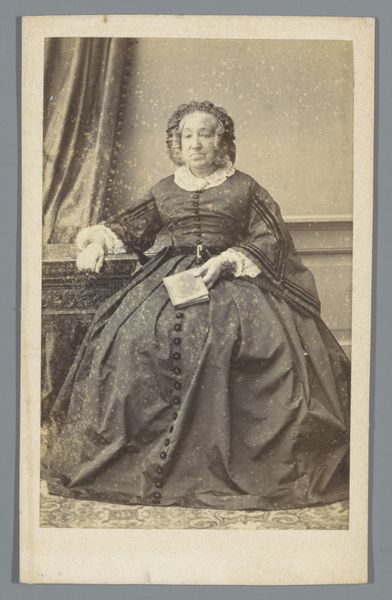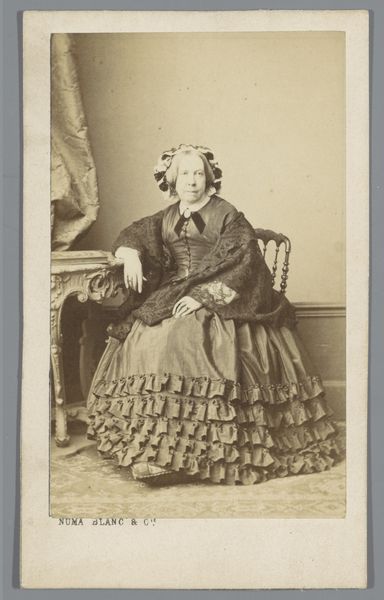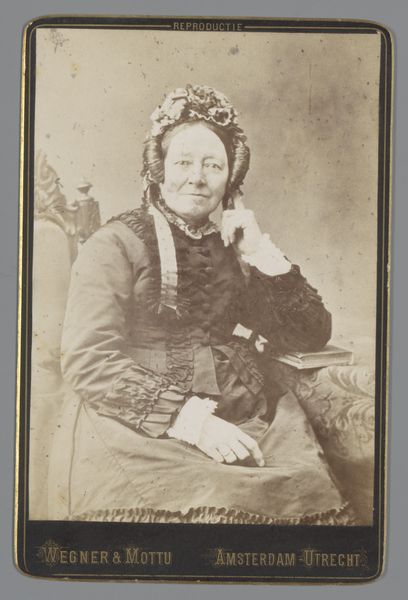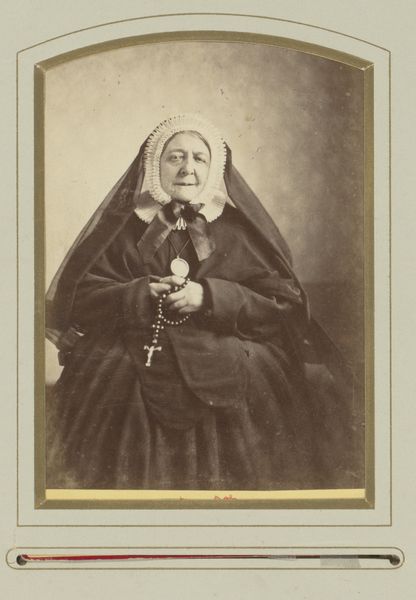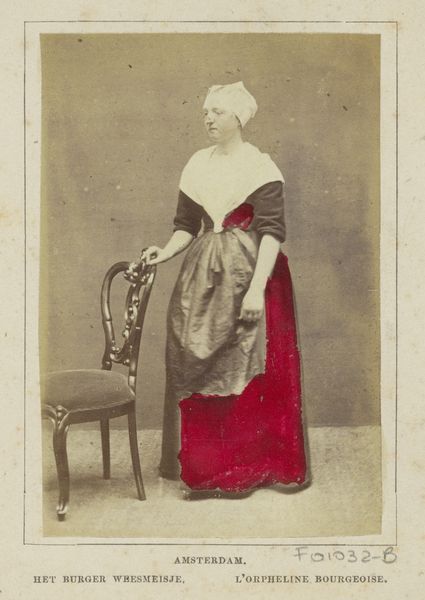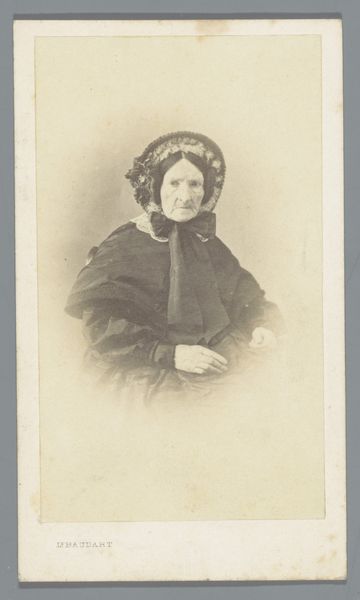
daguerreotype, photography
#
portrait
#
daguerreotype
#
photography
#
genre-painting
#
realism
Dimensions: height 104 mm, width 61 mm
Copyright: Rijks Museum: Open Domain
Curator: Looking at this portrait, I'm immediately drawn to the fabric, to the way light plays across the sitter's silk gown. There's such attention paid to the materiality. Editor: Absolutely, a fascinating texture captured in early photography! We are viewing an albumen print attributed to Disdéri & Co., created sometime between 1854 and 1889, and held at the Rijksmuseum. The studio was known for carte de visite portraits, impacting the market. This "Portret van een onbekende vrouw, staande achter een stoel", or Portrait of an Unknown Woman, is a great example. Curator: Did the photographic process dictate that formality? I mean look at the sheen of her dress and the detail in the carved chair—all suggest status and commodity, not personal expression. It all speaks of consumption. Editor: That's an interesting point. Early photographic processes demanded longer exposure times which meant sitters needed to remain relatively still. Photography at this time becomes part of the aspirational visual culture for the rising bourgeoisie and the technology became more widespread as portraits, landscapes and other genre imagery were increasingly mass-produced, reaching broader audiences. The subject appears wealthy. Curator: The backdrop, too - look at the drape, presumably velvet. It creates a sense of stagecraft. The portrait is an exercise in manufacturing and marketing an image. What's her connection to Disderi and the consumption cycle. Editor: It prompts considerations of photographic production, patronage, and the circulation of imagery in nineteenth-century European society. Disdéri industrialized the photo production, and the carte-de-visite format enabled affordable portraits. And, we should note, it fueled the burgeoning cult of celebrity and personality. Curator: Exactly. Mass production changed the reception of images and image ownership. So, on that note, do we have a clue as to who the sitter is? Editor: Not definitively. The sitter's anonymity only heightens its historical importance and adds a layer of intriguing interpretation! We are left only with speculation around social context. Curator: Fascinating to consider the intersection of technique, materialism, and social impact of the production of this photograph and it's circulation. Editor: Absolutely. It invites reflection on how photographic technology democratized image-making and forever altered visual culture.
Comments
No comments
Be the first to comment and join the conversation on the ultimate creative platform.
